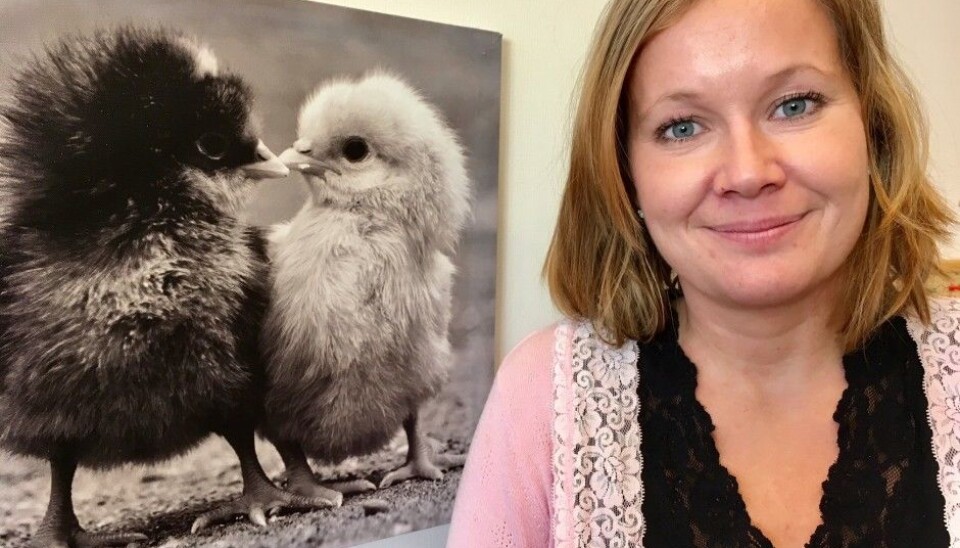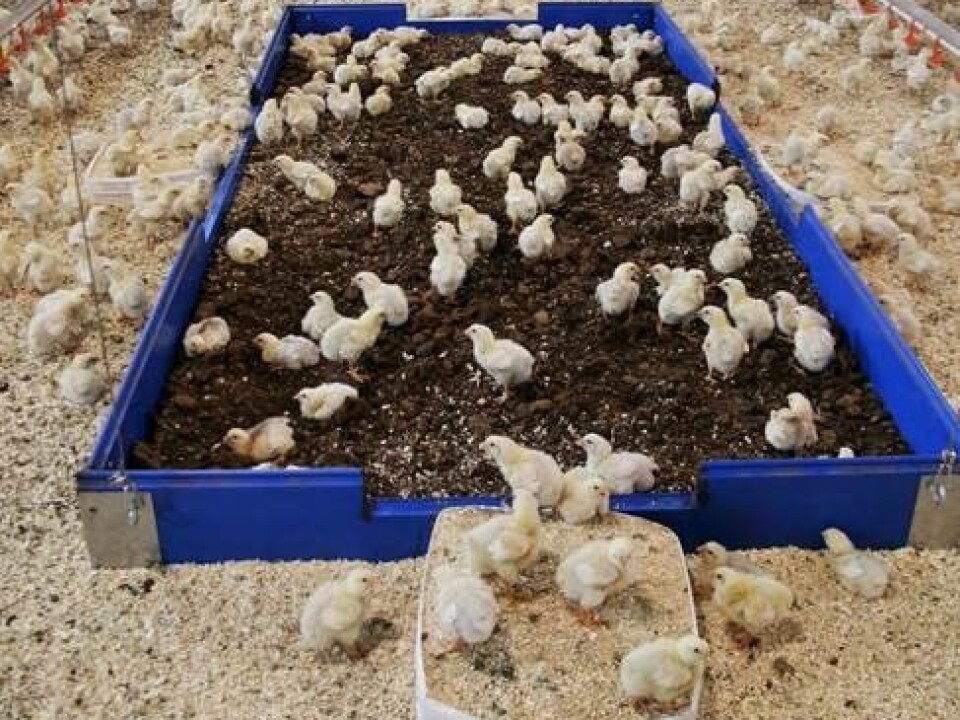
Chickens do best when they can play, climb and bathe
Chickens play more if they grow up in a varied environment with hay bales to peck at, boxes to climb onto and bedding in which to dust bathe. They become more active and build stronger bones, according to a new study.
Chicks become either layers or meat birds (broilers) depending on what they’re best suited for. Broilers are bred to grow fast and make good use of feed. They live a brief four to five weeks before they are slaughtered.
Meat birds provide the most meat in the shortest possible time. Good health and strong bones are the goal, but rapid weight gain is problematic and can cripple the birds.
A Norwegian study illustrates how simple measures that make chickens’ lives more interesting can positively affect their health and well being. The study was recently published in the Journal of Applied Animal Welfare Science.
Toys in the chicken coop
Broiler chickens seem to thrive better if they live in an environment that provides more materials to play with and platforms to climb onto. They become more active and vary their activity with this kind of “environmental enrichment,” as researchers call it.

"Just as people stay healthier by climbing stairs rather than taking the elevator, it seems that chickens’ bone health improves with this kind of activity,” says researcher Guro Vasdal at Animalia, Norway’s leading research and development specialist in meat and egg production.
Animalia is owned by Nortura and the Norwegian Confederation of Meat and Poultry (KLF), which collaborated with the Norwegian University of Life Sciences (NMBU) to carry out this study.
Research on animal welfare has gone on for decades, and in the 1960s researchers pointed out that farm animal welfare is not just about doing away with pain and fear, but also about creating a setting that gives livestock the freedom to do things they like to do in nature.
"In the 1990s animal welfare began to expand its focus to include animals’ emotional state. So today we say that good animal welfare involves a healthy animal that displays natural and positive behaviours, like play and exploration," says Vasdal.
Jumping, climbing and dust baths
Placing items into the animals’ environment that enable them to be more active is one way to improve animal welfare. Animals that have the opportunity, the desire and an enriched environment prefer to play instead of remain passive. These are positive behaviours, says the researcher.
Chickens need to be able to take dust baths to rid their feathers of fat and dirt, just like sparrows do in the wild, says Vasdal.
Meat birds also need to climb and jump to test out their wings, even though they can’t fly.
"We observed that when the coop is arranged in a way that lets chickens be more active, they get livelier and run around more. When they get a piece of straw in their beak, they usually run off with the other chickens right on their heels, as if they’re playing a game,” she says with a laugh.
Chicken coop experiment
The researchers needed to figure out how to measure whether the chicken activities actually affected their well being.
So they divided a standard chicken coop into two, with several thousand chickens in each section. The only difference between the coops was that half the birds had access to platforms, hay bales, and peat dust baths.
These chickens were able to satisfy their need to peck, explore and get up high. Chickens in the other section formed the control group and lived without these accoutrements.
"It was easy to see that the chickens became more active in a more challenging environment,” says Vasdal. Chickens in the coop without stimulating equipment become more passive.
Trying to fly
And unlike chickens that may peck each another if they’re bored, there is little pecking among broiler chickens. They are generally less aggressive, but they like to peck at hay bales.
The platform meets other needs and is good for the birds’ bone health.
"In the wild, chickens are motivated to roost up high and to find shelter under something protective. The chickens have to use their legs and wings to get onto and down from the platform, and some make a valiant attempt to fly down instead of using the ramps,” says Vasdal.
Less lameness
The researchers also measured the birds’ injuries, disease, bone quality, growth and behaviour.
In addition, they measured environmental factors, such as food intake, the quality of the air, water, feed and the animal density, known as resource-based indicators.
Bone quality is assessed by measuring the chickens’ gait. "We found that chickens developed less lameness in an enriched environment,” says Vasdal.
Although poor bone quality rarely leads to bone fractures, researchers imagine that crippled animals experience pain.
"Lameness can also prevent chickens from performing typical chicken behaviour, so we want them to be able to walk properly," she says.
Added activity doesn’t reduce weight
But farmers might want to know if the higher activity level causes the chickens to eat more or not gain as much weight as more sedentary chickens.
"We saw no differences in the chickens’ dressed weight, and feed consumption was the same in both groups," Vasdal says.
According to Vasdal, the largest Norwegian producers of broilers have implemented environmental enrichment in the last four years. This applies to the five major chicken producers Nortura, Den Stolte Hane, Norsk kylling, Ytterøy-kylling and Gårdsand.
Vasdal conducted the study in collaboration with researcher Judit Vas and Professor Ruth Newberry at NMBU in Ås and Professor Randi Oppermann Moe from NMBU Adamstuen.
-------------------------------------
Read the Norwegian version of this article at forskning.no.






























